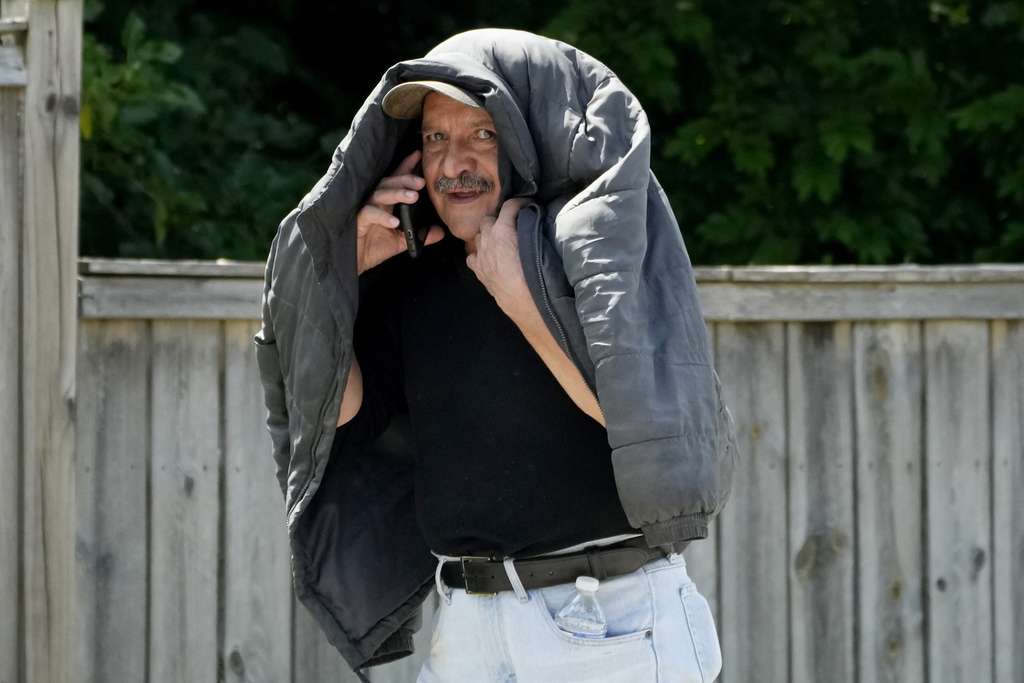TOLEDO, Ohio (AP) — Stifling heat blanketed tens of millions of people in United States on Tuesday, forcing people and even zoo animals to find ways to cool down as summer arrives in what promises to be a sweltering week.
Extreme heat alerts stretched from Iowa to Ohio and even into the upper reaches of Michigan on Tuesday, canceling outdoor activities across the region. The National Weather Service said the dangerous heat wave was expected to make its way across the country and into Maine until at least Friday.
Near Toledo, Ohio, the city of Rossford called off its weekly street fair because of temperatures expected to reach the upper 90s. A food bank in upstate New York canceled deliveries for Wednesday out of concern for its staff and volunteers.
An organization that provides produce to areas with limited access to fresh foods in Columbus, Ohio, prepared frozen towels for their workers if they overheat and packed cold water to stay hydrated
“Hydration is the key,” said, Monique McCoy, market manager for the Local Matters Veggie Van.
Schools in New York canceled field trips Tuesday to the Rosamond Gifford Zoo in Syracuse, where workers turned on water misters for visitors and the animals. Elephants and other animals were getting chunks of ice in their pools, said Ted Fox, the zoo’s executive director.
“Most of the species love them,” Fox said. “Even the tigers love to lick the ice and put their heads on them when that’s when it’s this warm.”
A recent study found that climate change is making heat waves move more slowly and affect more people for a longer time. Last year, the U.S. saw the most heat waves — abnormally hot weather lasting more than two days — since 1936.
Chicago broke a 1957 temperature record Monday with a high of 97 degrees Fahrenheit (36.1 degrees Celsius). Hot and muggy conditions will continue this week with peak heat indexes near 100 F (37.7 C) at times, the National Weather Service in Chicago said in a post on the social platform X.
Much of the Midwest and Northeast were under heat warnings or watches, with officials opening cooling centers and urging people to limit outdoor activities when possible and to check in with family members and neighbors who may be vulnerable to the heat.

In New York, Gov. Kathy Hochul activated the National Guard to assist in any heat emergencies that develop over the next several days.
“This is a time of significant risk, and we’re doing our best to make sure that all lives are protected,” Hochul said Tuesday.
In Southern California, firefighters increased their containment of a large wildfire burning in steep, hard-to-reach areas of mountains north of Los Angeles. But hot, dry, windy weather could challenge their efforts Tuesday. Wildfires also burned in New Mexico, prompting the evacuation of a village of 7,000 people.
While much of the U.S. swelters, late-season snow was forecast for the northern Rockies, with parts of Montana and north-central Idaho under a winter storm warning into Tuesday. As much as 20 inches (51 centimeters) was predicted for higher elevations around Glacier National Park.
Meanwhile, a fresh batch of tropical moisture was bringing an increasing threat of heavy rain and flash flooding to the central Gulf Coast. Hurricane season this year is forecast to be among the most active in recent memory.

___
Orsagos reported from Columbus.
